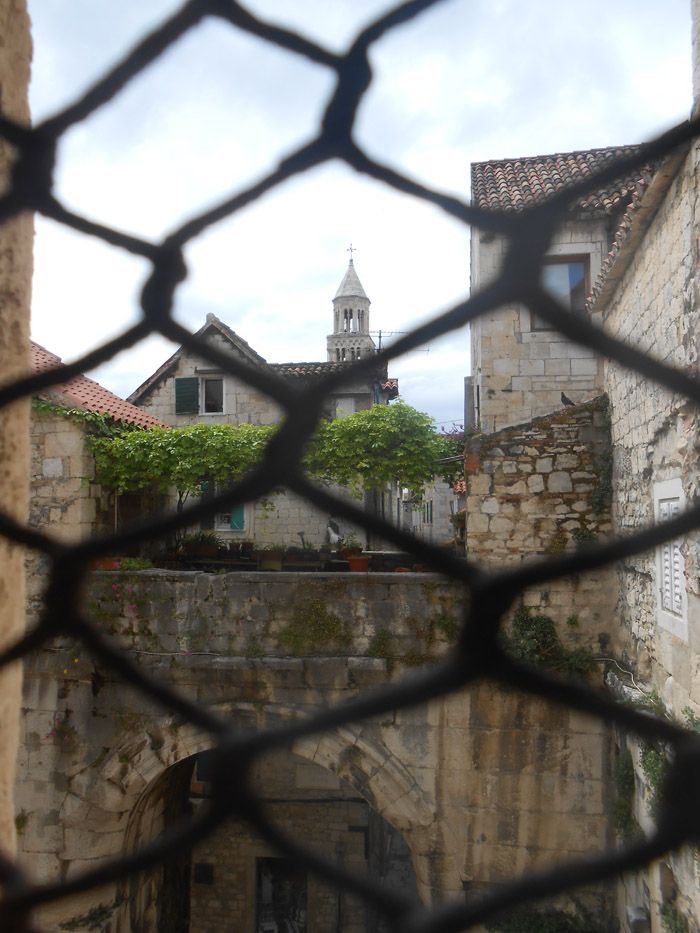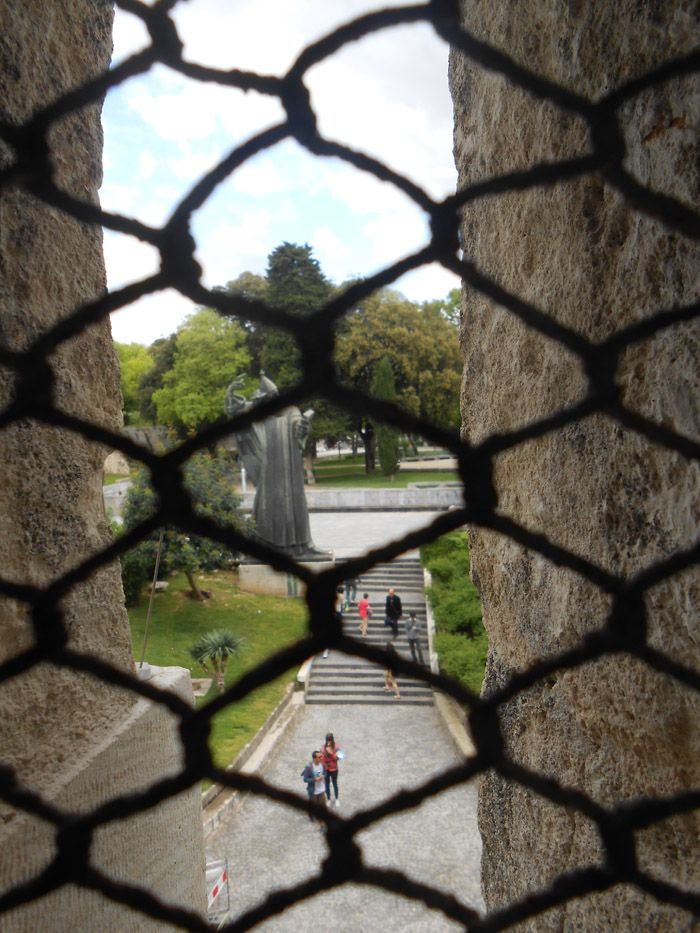Diocletian's Palace and its Most Visited Attractions
A little insight into the palace and its most visited attractions.
DIOCLETIAN'S PALACE
The Emperor, Diocletian constructed his retirement palace in about 300AD where he resided until his death. After his death, the palace became home to the various expelled emperors and their family. Eventually when the Avars and Slavs conquered the surrounding areas of Split, the city’s residents moved within the palace walls. More and more settlements were built within the palace and eventually the palace became the town itself. Today Diocletian’s Palace is considered one of the only cultural monuments in the world in which people still live. In the 17th century, a new defense system in the form of bastions was built around the palace by the famous Frenchman; A. Magli. Diocletian’s Palace is an example of the most magnificent Roman architecture on the Adriatic coast. It is important to mention that the palace also serves as a residential area today and is therefore open to all. Due to this, it is near impossible to control the flow of visitors to the site. There are many attractions within the palace, but the most viewed is the St. Duje Cathedral on the Peristyle square. Other popular sites are the Temple of Jupiter and the cellars of the palace. The narrow, crooked streets with various shops are also popular among tourists.
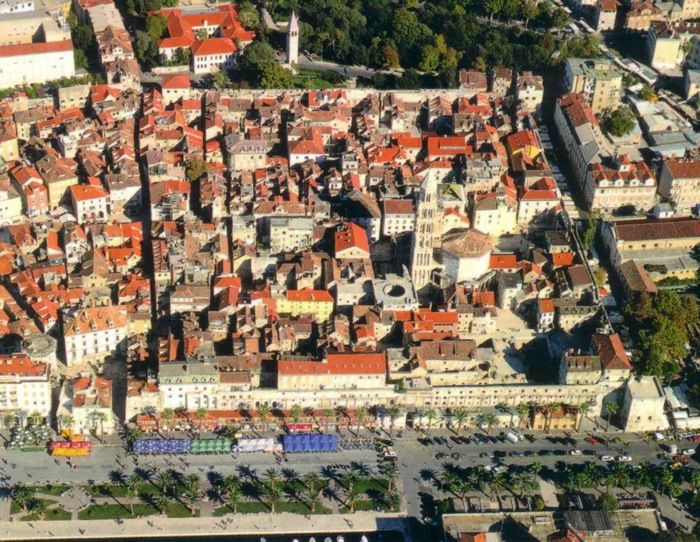
Aerial View of Diocletian's Palace
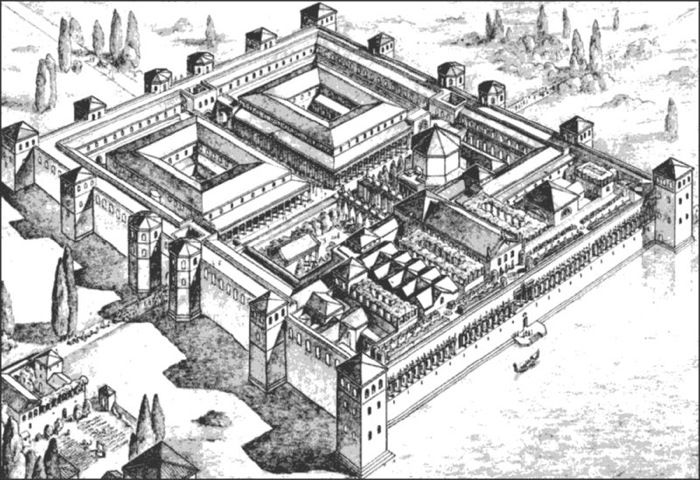
Drawing of the palace in its original plan
ST. DUJE (DOMNIUS) CATHEDRAL
The St. Duje Cathedral and bell tower is known as one of the oldest Catholic Cathedrals in the world and is located within the palace walls in the central square of Peristyle. The construction of this cathedral only began in the 13th century, long after the death of Emperor Diocletian as he was a persecutor of Christians. Ironically, this Cathedral was once the emperor’s mausoleum. The bell tower however, took about 300 years to construct. The cathedral has an octagon shape which is surrounded by a colonnade. Next to the entrance to the cathedral are is a black sphinx from 15 BC which was brought from Luxor in Egypt. In the cellar of the cathedral, tourists who enjoy historical religious artifacts can visit the treasury. Visitors can also climb to the top of the bell tower to enjoy 360 degree views of Split.
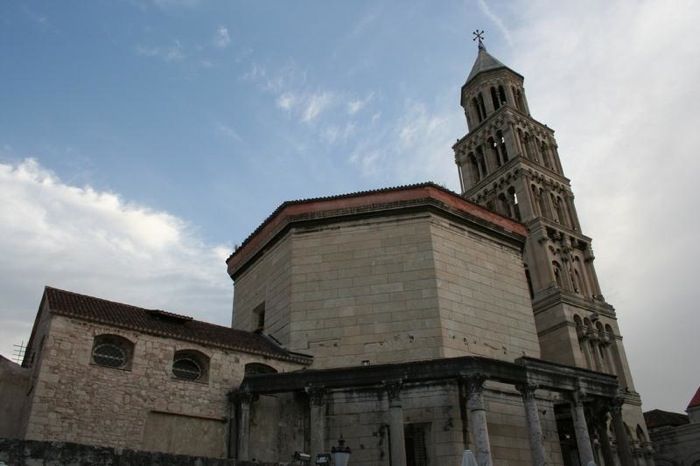
St. Duje's Cathedral and Bell Tower
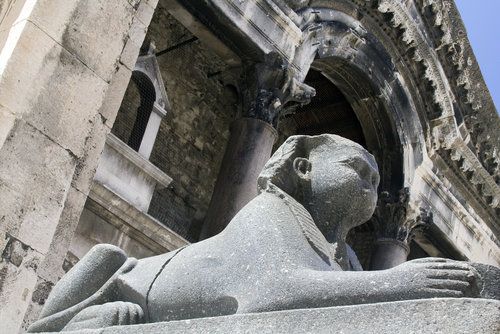
Egyptian Sphinx
THE BASEMENT HALLS
The substructure of Diocletian’s Palace consists of many rooms and the wallwork as supporting walls for the emperor’s residents above. In the past, these rooms were of no use as they were under water. The seaside entrance to the palace allowed ships and boats to enter the through this gate, and anchor below the place and enter straight onto the Peristyle central square. Myths say that the persecuted Christians were left in this substructure in the small rooms, preventing the bodies from flowing out. In the 1850’s, architect Vicko Andric started a project which drained and cleaned the cellars of Diocletian’s Palace, and created a Riviera on the seaside front of the palace which is known as Riva today. Today the cellar is the main area for souvenir shops that lead to the stairs that go the Peristyle square and St. Duje’s cathedral. Other parts of the substructure are used as temporary art exhibitions or function spaces.
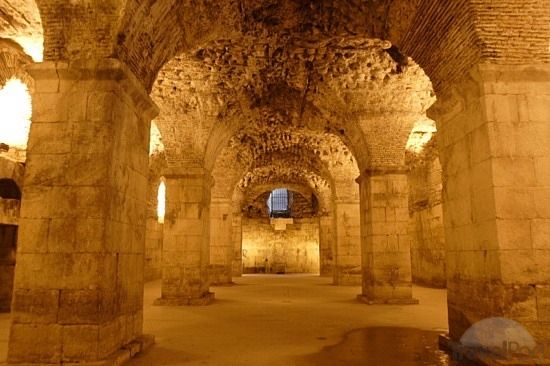
JUPITER'S TEMPLE
Jupiter was the name of Diocletian’s father and was also the highest Roman god. After the fall of the Roman Empire, the temple was converted into a Cathedral baptistery. Inside the small temple, there are two medieval stone coffins where the archbishops of Split, John and Luka are buried. Inside the temple there is a statue of Saint John made by the famous sculpture, Ivan Mestrovic. In the center of the temple there is a font basin which today is used as a wishing well as visitors throw coins in it. Originally, the temple never had a roof and this caused the rapid deterioration of the site due to environmental factors. The imposing arched ceiling has a series of face sculpured looking down on you. At the entrance of the temple, another Eqyptian sphinx can be found however, it has been vandalized and no longer has a head.
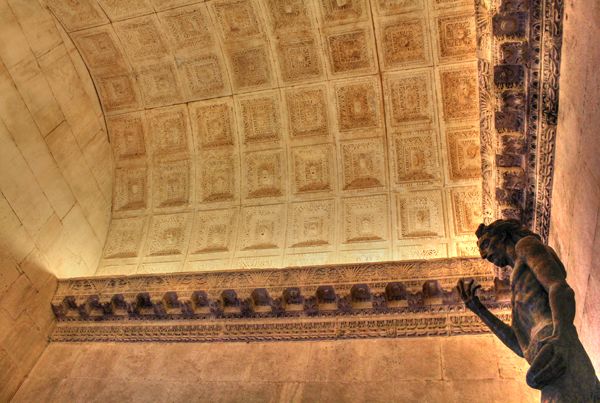
Interior pf Jupiter's Temple: Arched ceiling and statue of St. John
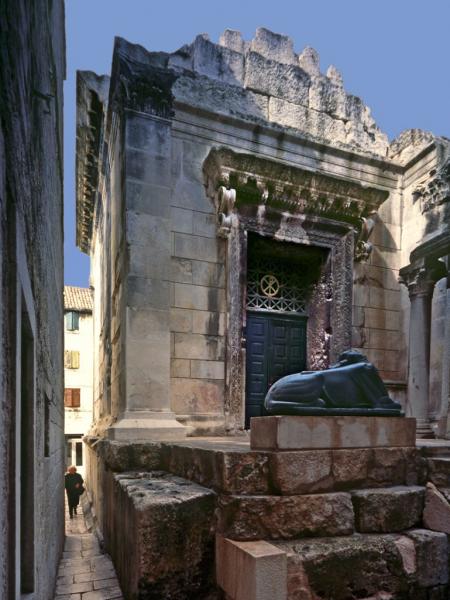
Jupiter's Temple with Headless Sphinx in Front
STATUE OF GRGUR NINSKI
The statue of Grgur Ninski, made my Ivan Mestrovic in 1929, is another well visited site for tourists. Previously, the statue was located in the central square of Peristyle but was moved in World War II, cut into three and dug underground to hide it from the occupying forces. It was re-erected outside the palace wall by the East, “Golden Gate” entrance. Grgur Ninski was the arch bishop of Split in the 10th century who also strongly opposed the Pope. Services were always held in Latin which was not understandable to the people of Croatia. Grgur Ninski then changed his services into the Croatian language which created more worship among the people as they understood their services and prayers. Some wearing has happened as it is believed that touching the toe of the statue brings luck. Over the years as more tourist visit the sight, it has been rubbed golden.
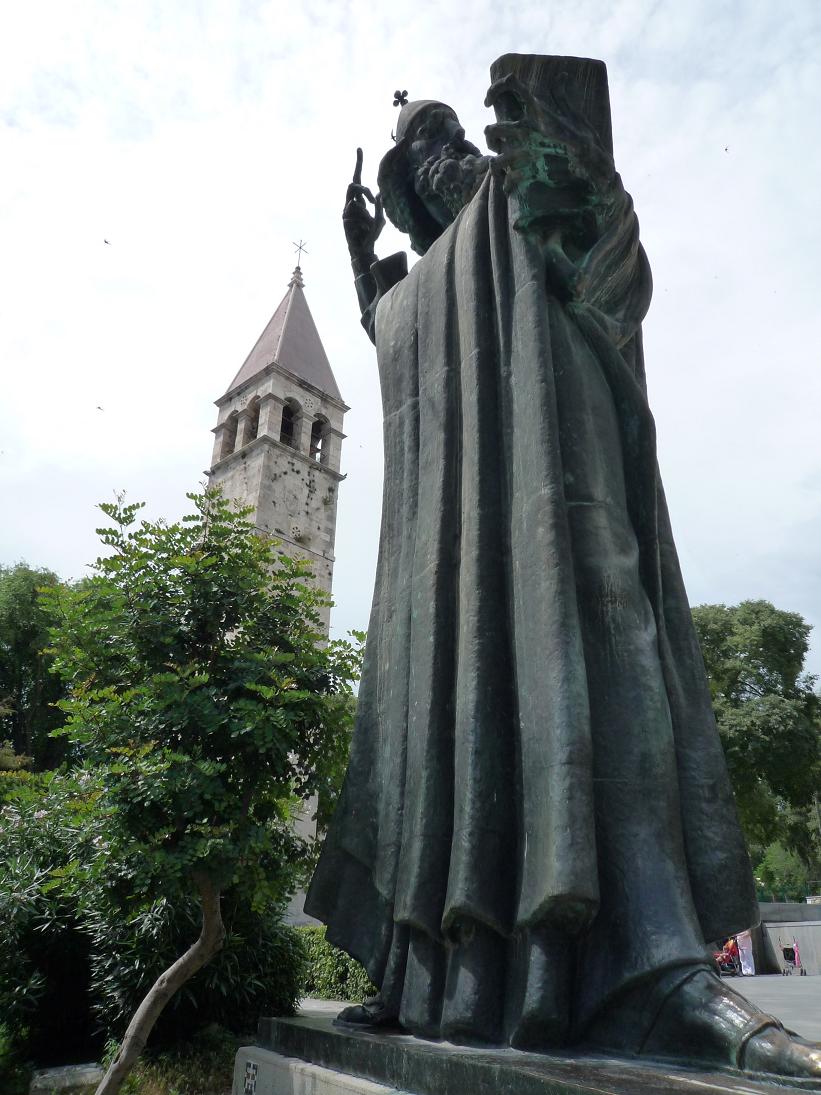
Statue of Grgur Ninski
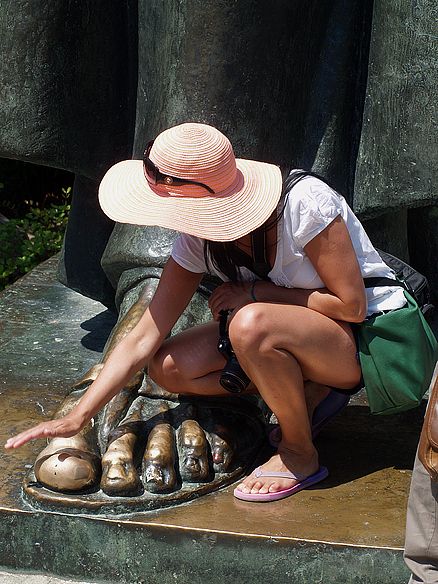
Make a wish!
Split Palaces In And Around The Palace
When someone mention the word Palace in Split, association is more than obvious, Diocletian's Palace. It's the main city landmark, and actually the city itself, because of the life that's going on within its walls for 17 centuries.
However, through rich and turbulent history of Split many noble families and distinguished citizens built their residences in what we today know and cherish as the historical centre. Since they were built, some of them were turned into museums, like Split City Museum in Papalic Palace, or Emanuel Vidovic Gallery in Andric house. Others were converted into shops , even supermarkets like the Small Papalic Palace, or restaurants, or bars in Karepic, Cipci and Marulic palaces. One of the most beautiful, Ciprianis, now hosts one political part, unfortunately not very interested for meaning of that house in Split history. And yes, there are luxury apartments in some of them, like in Grisogono and Deskovic. Unfortunately, there are also those which are neglected and deserted, inhabited, for example Albert.
What is important, though, is that all of them are excellent examples of architecture styles over centuries in Split. It's also nice alternative way for Split sightseeing which will bring you excellent insight into historical layers that city is made of. While walking from one to another, you can see all other important landmarks, and info plaques will tell you all you need to know about each one of these palaces. Just follow our map available here and watch for buildings from our photos.
Andric house

Alberti Palace

Augubio Palace

Bajamonti-Deskovic Palace

Cambi Palace

Cindro Palace

Cipci Palace

Dragisic (De Caris) Geremia
Dragisic (De Caris) Palace

Grisogono Palace

Karepic Palace

Palace at the Golden Gate

Palace at the Iron Gate

Marulic Palace

Milesi Palace
Palace at Dosud

Nakic Palace

Small Papalic Palace

Big Papalic Palace

Pavlovic Palace

Skocibusic Palace

Tartaglia Palace
Is Saint Martin The Narrowest Church You Have Ever Seen?
Maybe the most often sentence beginning you can hear in Split, when listening some local explaining beauties of his or her city by far is "This is the most...". And than goes "beautiful", "oldest", "famous", just pick one. For example, Split cathedral of Saint Domnius is probably the oldest building serving as a cathedral, since it's actually converted mausoleum of Roman emperor Diocletian.
But there is one hidden gem that can be the other extreme in this race for greatness. Just above the northern gate of the Diocletian's palace, called Golden Gate, in what once was the Roman guardhouse, there is probably the narrowest church you have ever seen. It's called Saint Martin, and is only 1.64 meters wide and 10 meters long, settled within the Palace's northern wall. The only trace of this church from the outside, apart from stairs leading to it through old Dominican monastery, are miniature windows visible from the inner yard of the Golden Gate, hidden in once bigger niches, now covered with bricks.
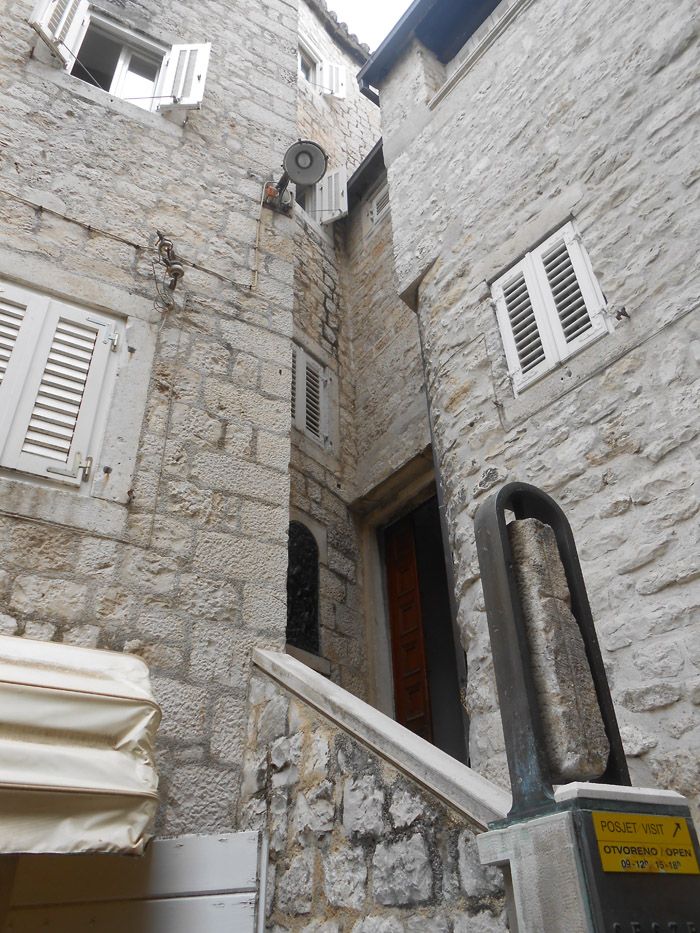
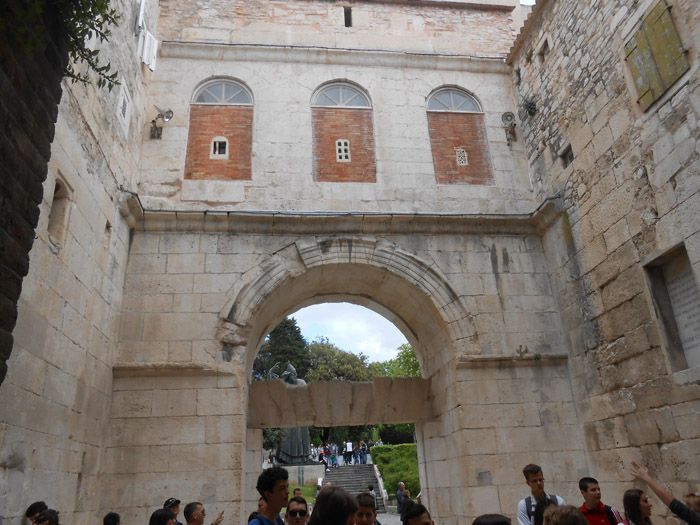
And Saint Martin's importance very much exceeds its size. It was built in the ninth century, during reign of old Croatian duke Trpimir, and actually it was the first Christian church to be built within the Diocletian's Palace. Beside Saint Martin, church was originaly dedicated to the Virgin Mary, and pope Gregory. From that age dates the most important piece in the church, a 9th century architrave with carved names of Trpimir's chaplains Dominic and Martin.
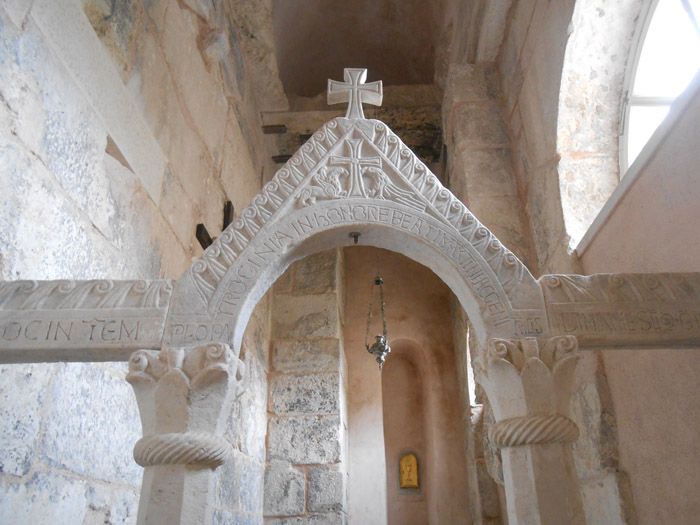
After monastery was abandoned due to a medieval black death epidemic, church was forgoten for centuries, until in late 1800s founder of Croatian archeology father Frane Bulić rediscovered it and lead its reconstruction. During excavations he even discovered a grave of Saint Martin's builder, chaplain Dominic.
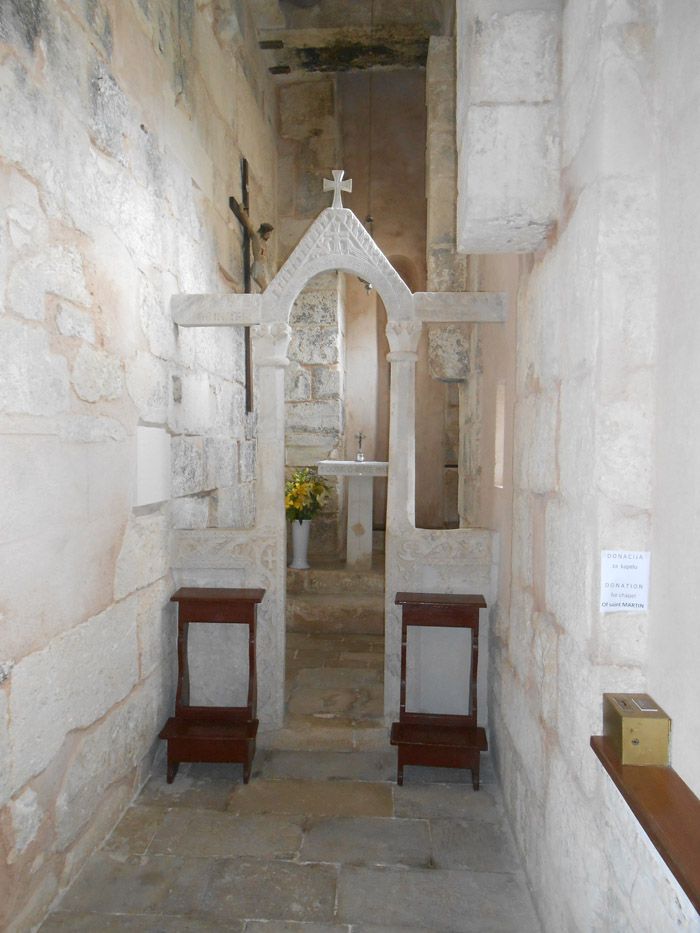
Even many locals don't know about this church, and visit offers really one of a kind view to the monument of Gregory of Nin, or to cathedral's bell tower on the other side. And all this visible just if you turn from one side to another, within barely two steps. Of course, being inside the ancient Roman palace's walls is unprecendent.